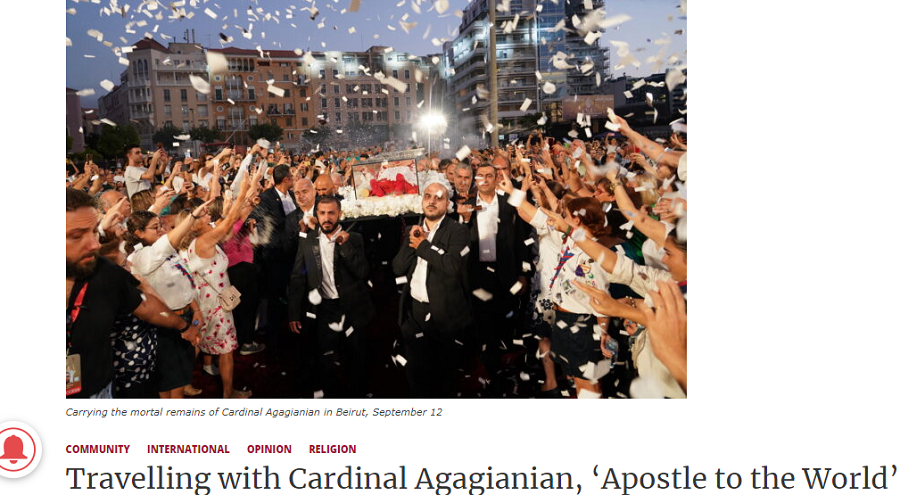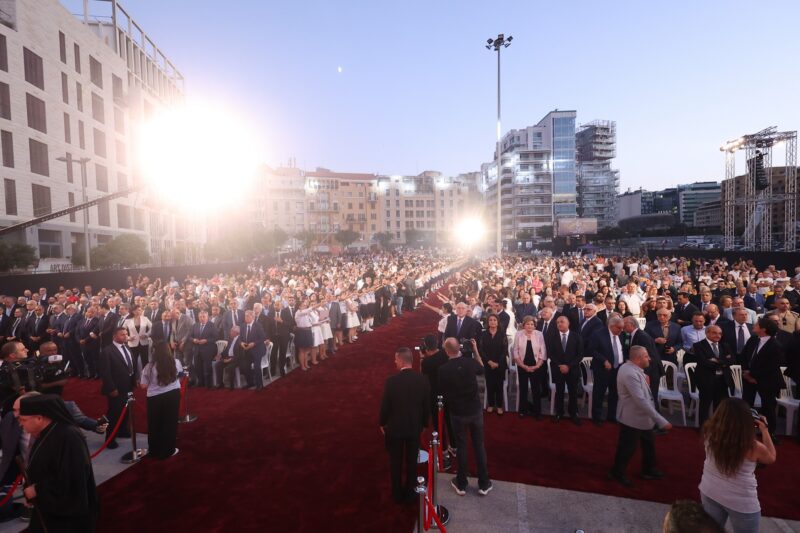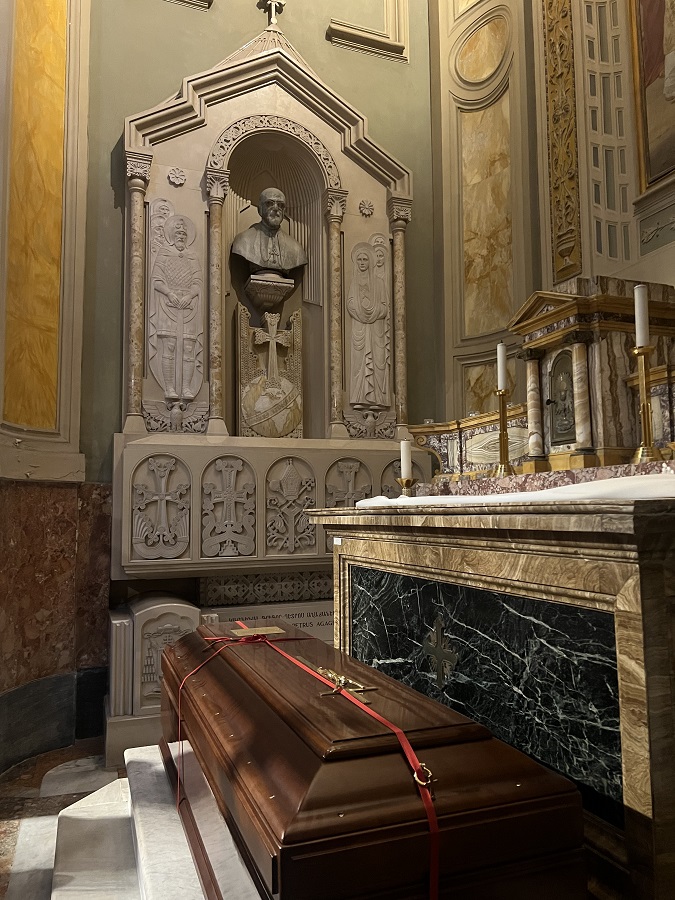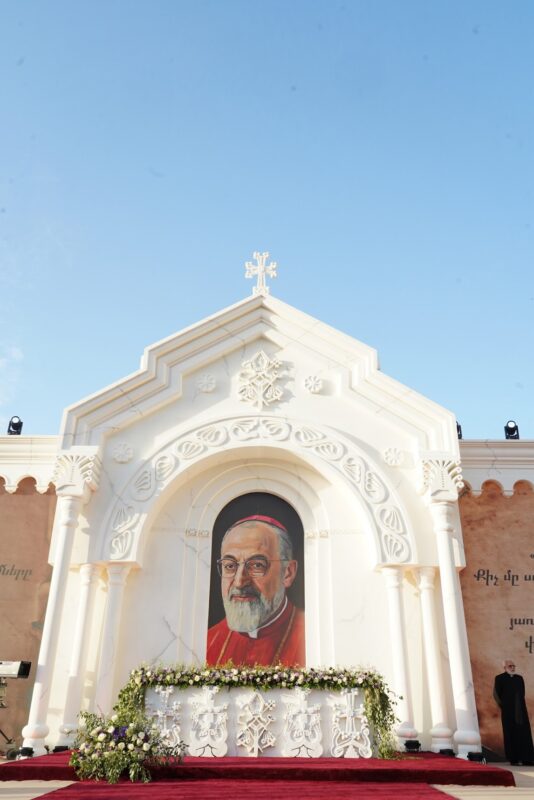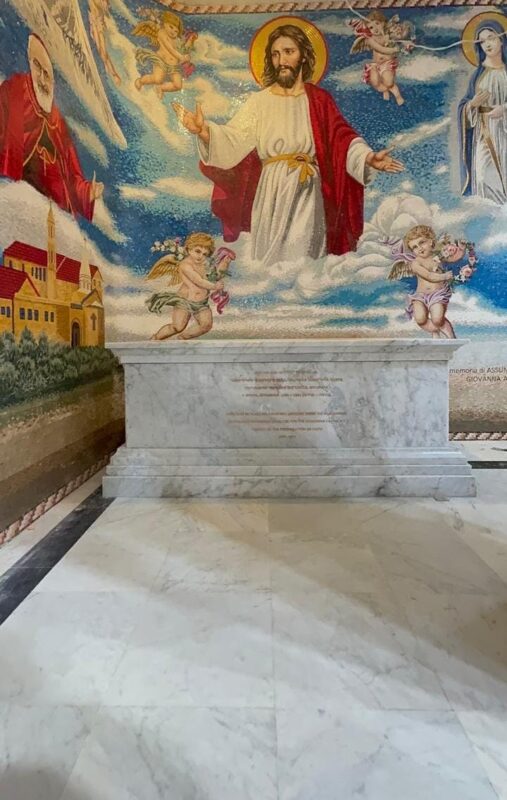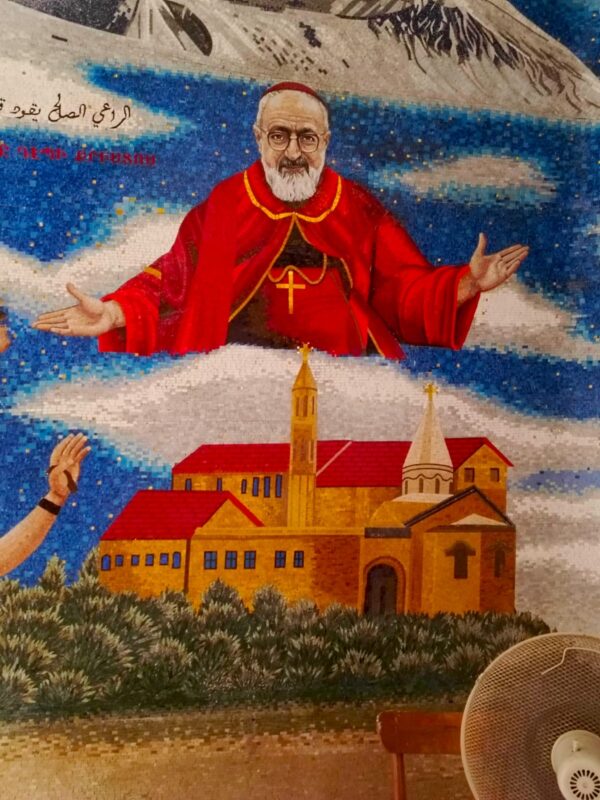By Dr. Cara Aghajanian
This week marked seminal events for the Armenian community, Lebanon, and the world. As part of his cause for canonization, the mortal remains of Servant of God Cardinal Gregorio Pietro XV Agagianian (Կարտինալ Գրիգոր Պետրոս ԺԵ Աղաճանեան) were transferred from his tomb in Rome to his newly dedicated chapel in the Armenian Catholic Cathedral of St. Elias and St. Gregory in Beirut. The preparations for this solemn event were surrounded by a sense of profound joy and love. In his many travels representing the Holy Father around the globe, Cardinal Agagianian was met with crowds from all faiths and all walks of life. However, I think even he would be surprised by the crowds that greeted him on his return to Lebanon.
On the 12th of September, in a quiet ceremony, he began his trip back to Beirut. As we left the church in Rome and made our way to the airport, I found myself thinking of his first trip from his home in Akhaltsikhe [today in Georgia], to Rome at the age of 11. I think of the many emotions both for him and his mother. At that moment, they could have never imagined the places he would see, the events he would influence, or the lives he would change. I could not help but think how he is still influencing the world.
As a child, I often heard about Cardinal Agagianian. However, it’s only as I became an adult that I really understood who he was and what his impact was on the world. So, “who was Cardinal Agagianian?” He was truly multifaceted. He was a devoted follower of Christ whose mission was to spread the Gospel and Christ’s love around the world. As a devoted priest, he cared for his Armenian people during some of the most tragic moments in our history. Going beyond our community, he brought this love and dedication to the whole world through his many travels representing the Holy Father. He was multilingual with a sharp intellect, able to enliven the teachings of the Church. He was a person with whom anyone, regardless of faith or social status, could relate to and seek advice. In such a chaotic world, we could learn from his example of bringing people together to build a common peace.
Cardinal Agagianian was not only a pastor for the Armenian Church, but for the wider Catholic Church. He was ordained a priest in 1917. After serving in his home parishes, he returned to Rome and in 1921 became assistant rector of the Pontifical Armenian College in Rome. He was made rector in 1932. In 1937 he was elected as Patriarch of the Armenian Catholic Church. In 1946 he was made a Cardinal, one of only two Armenians in history. As a cardinal he participated in two papal conclaves, 1958 and in 1963. His intellect and spirituality were recognized and led him to key roles in the Church.
A pivotal moment was his appointment in 1958 as the Prefect of the Congregation for the Propagation of the Faith. This role gave him the responsibility for all Catholic missionary work and related activities. For him, it was more than an administrative role. He actively went out to the missionary areas in some of, what was then, the most remote areas of the world. In a time when the Pope did not travel, he represented the Pope around the world.
Cardinal Agagianian went beyond the island of our community into the open, often uncharted waters of the bigger Catholic Church, and the world. Yet he carried our island with him. He maintained his spiritual and cultural identity while adding to it. He exemplified the beauty of our multifaceted church. His direct understanding of the suffering of the Armenian people gave him a spiritual and social reference for understanding ethnic and religious conflicts. His faith and love were evident in his words and actions.
In a letter to the missions he once wrote, “You are the Church of hope: ignited and alive not by the strength of numbers, but by the favor of charity and for the joy of bearing witness to the Gospel among all men. Bring our respectful greeting and signs of our affectionate brotherhood to all the unbaptized brothers among whom you live. Religious doctrines, beliefs, traditions, and habits separate us, but an essential value unites us: that we are all, without exception, creatures of God and linked to each other by the closest brotherhood. In the great human family, no one is isolated and abandoned to himself.”
This “respectful greeting” and “signs of affectionate brotherhood” was tangibly evident on his arrival in Beirut on the afternoon of 12 September. Accompanied from Rome by the current Armenian Catholic Patriarch of Cilicia, Raphael Bedros XXI Minassian, his mortal remains were met at the airport in Beirut with full state honors. When his body arrived in Beirut’s Martyr’s Square, he was greeted by a crowd of over 4,000 people. His casket was carried in procession by 12 Lebanese men from different religious groups as a symbol of interfaith unity. This joyous ceremony brought together people from many faiths, cultures, and walks of life. It gave a glimpse of unity that can transcend differences.
While the ceremony may be over, the spark is lit. As we go forward, may his life and works continue to be an inspiration to work for unity and respect in all of our interactions and relationships as well as a reminder of the joy and hope of the Gospel.
(Dr. Cara Aghajanian is the Director of Language Testing, Technology, and FAO programs at the Defense Language and National Security Education Office.)




















































